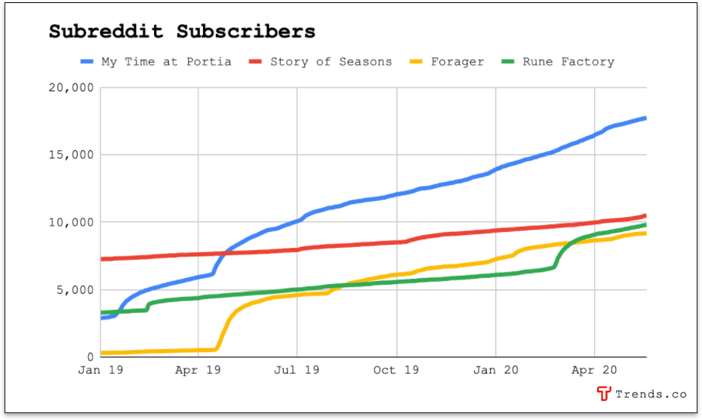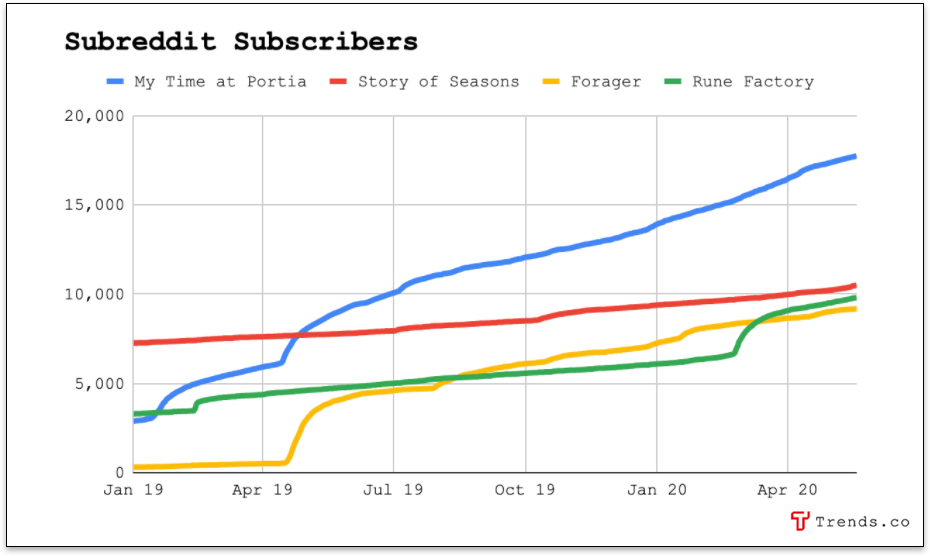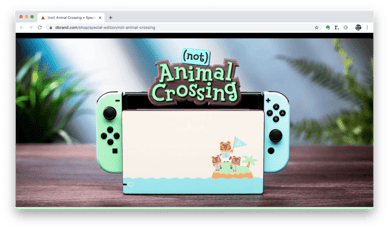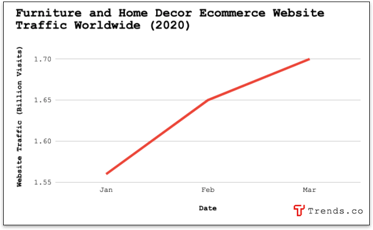nlopchantamang.com
How to Capitalize on Digital Status Symbols
Aja Frost @ajavuu

The Signal: Billions of bored, restless people stuck at home has been a massive boost for the gaming industry. From March to April alone, Microsoft reported a 130% increase in multiplayer engagement. Twitch, the most popular video game streaming platform, saw a 50% increase in gaming hours watched (to 1.49B hours).
The Nintendo Switch gaming console is also having its day in the sun -- it is sold out everywhere, leading to tons of sales (sometimes at 2 or even 3x the $299 pricetag) on eBay and Craigslist.
But the spending doesn’t stop there: People are also making in-game purchases of virtual goods. Player spending on Animal Crossing Pocket Camp, a relaxing game that lets you live a virtual life on a deserted island, reached an all-time high in April of $7.9m. What are gamers spending on? A camping chair will set you back $12, while you can expect to pay as much as $17 for a telescope (assuming $0.05 / “Leaf Ticket”: the in-game virtual currency).
The virtual goods market is already huge -- $50B to be precise (up by 30% from $38B in 2017). It makes up the bulk of total gaming industry revenue. Even before COVID-19, the industry was expected to grow at a 22% compound annual growth rate (CAGR) to $190B by 2025.
Some surprising products and services are developing around the Animal Crossing craze. For example, people are paying interior designers ~$50/hour to help them revamp their virtual home. Secondary markets are also emerging: Nookazon, for example, is a marketplace where you can trade Animal Crossing items.
Unless you’ve been living inside a virtual reality headset the past few months, you’ve heard of Fortnite: a free-to-play video game with more than 350m registered players. The game has racked up more than $4B in in-game sales since its 2017 release, and has collaborated with a few “real world” brands so that players can:
- dress their avatars in limited-edition virtual Nike shoes for $18 a pop;
- play as Keanu Reeves for $20;
- buy a virtual NFL jersey for $15 each.
A Fortnite study found that some 77% of players spend money on virtual goods. The average per-player spend in 2020? Roughly $102 -- a 21% increase from $85 in 2018. Half spend money on character outfits, while nearly 10% hand over money for emotes (unique dance moves). Some big spenders we spoke to have spent as much as $2k each -- a number that was confirmed by others in this subreddit.
The Opportunity: There are opportunities for brands to:
- collaborate with popular games;
- create digital versions of their own products;
- provide products and services that support the burgeoning ecosystem (e.g., Nookazon).
Businesses can capitalize on the virtual product trend by targeting a number of games that are similar in style and premise to Animal Crossing, which have smaller but still engaged communities:

Opportunities exist for service providers like interior decorators to cash in, too. You could target your product or service at a specific niche, like restaurants, city planning -- even farming. If you are a city planner, you could consult with players on road design for traffic efficiency. This is a common FAQ in the City Skylines game, and there are plenty of YouTube videos (e.g., this one with 154k views) dedicated to this problem.
Digital collectables and status symbols: Capitalizing on the virtual goods economy goes beyond gaming. Virtual collectables, for example, have started gaining traction in recent years as the “show-off” economy has increasingly moved online. Who could forget CryptoKitties, which has sold $40m worth of digital cats since 2017 (with some individual kitties selling for more than $300k per piece)?
Artists from more than 170 countries have made $772k selling their digital art collectables on platforms such as SuperRare, which uses blockchain technology to create and sell unique, transferrable, digital one-offs.
The opportunity: You could create and sell one-off virtual collectables based on your products. Fanaply, for example, creates digital products for music, sports, and entertainment, including virtual, limited-edition merchandise to replace band t-shirts and the like. Fanaply is a “social flexing” platform -- a way for fans to demonstrate their dedication and be rewarded (e.g., fans who own a digital collectible can receive news about secret shows).
You could also use digital collectables as a marketing tool. Think about what Tazos did for Frito-Lay potato chips in the ‘90s. Tazos were trading card-like plastic collectable disks that transformed school lunchtimes in South America, Asia, Africa, and Australia. They were distributed in potato chip packets and quickly became the must-have “membership card for coolness.”
The strategy resulted in a 50% growth in sales for Frito-Lay. In some countries it boosted sales by as much as 200%. Why not use this strategy to drive sales by rewarding customers with digital collectables when they buy your product?

Ecommerce: Companies are using virtual goods, avatars, and even completely virtual influencers to drive sales of their products. Drest, for example, is an app that allows users to dress photo-realistic avatars in styling challenges, and then buy physical versions of the clothes on Farfetch.
Drest is following in the footsteps of Covet Fashion, a game that lets users create outfits with real brands. The app had 600k downloads in April 2020 and generated $53.4m in sales in 2018.
Bonus opportunity: Whatever millennials are spending on themselves, they are probably spending more on their babies (or fur babies).
Ecommerce companies in the child- or pet-care space can capitalize on this trend by getting people to interact and fall in love with their products virtually first -- making their (physical) products irresistible to customers wanting to bring their virtual reality to life.


Leave a Comment